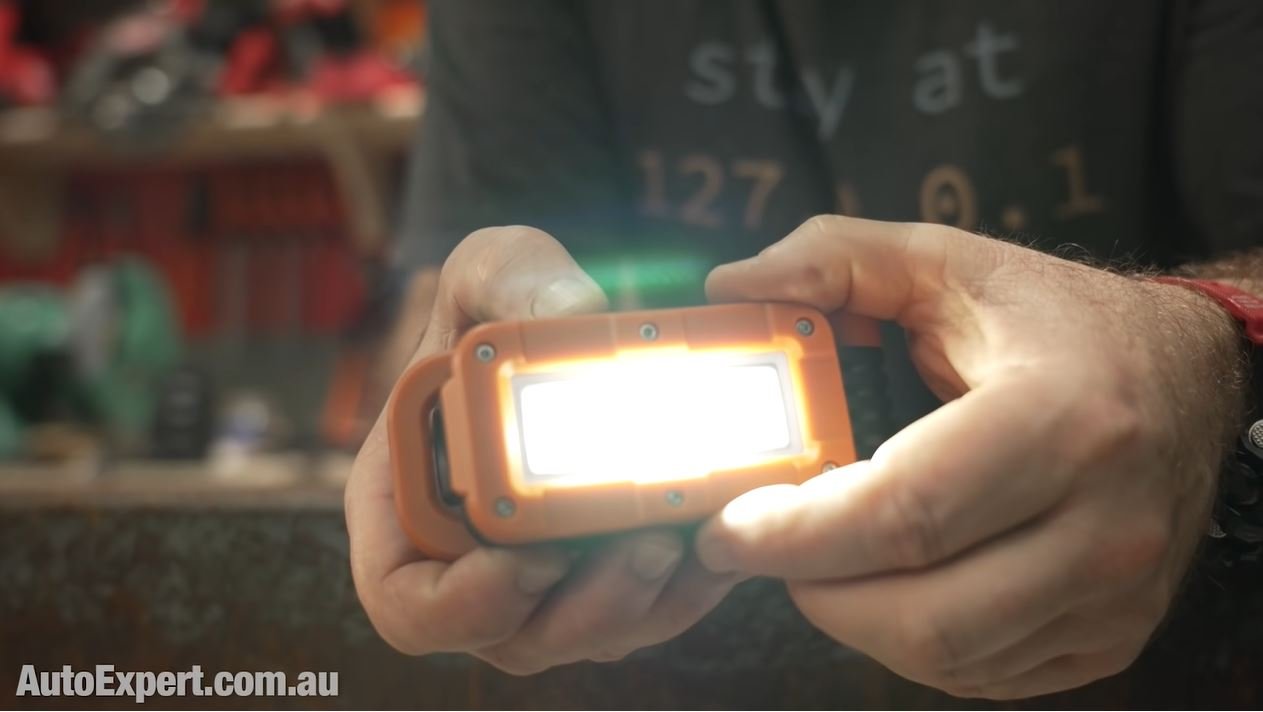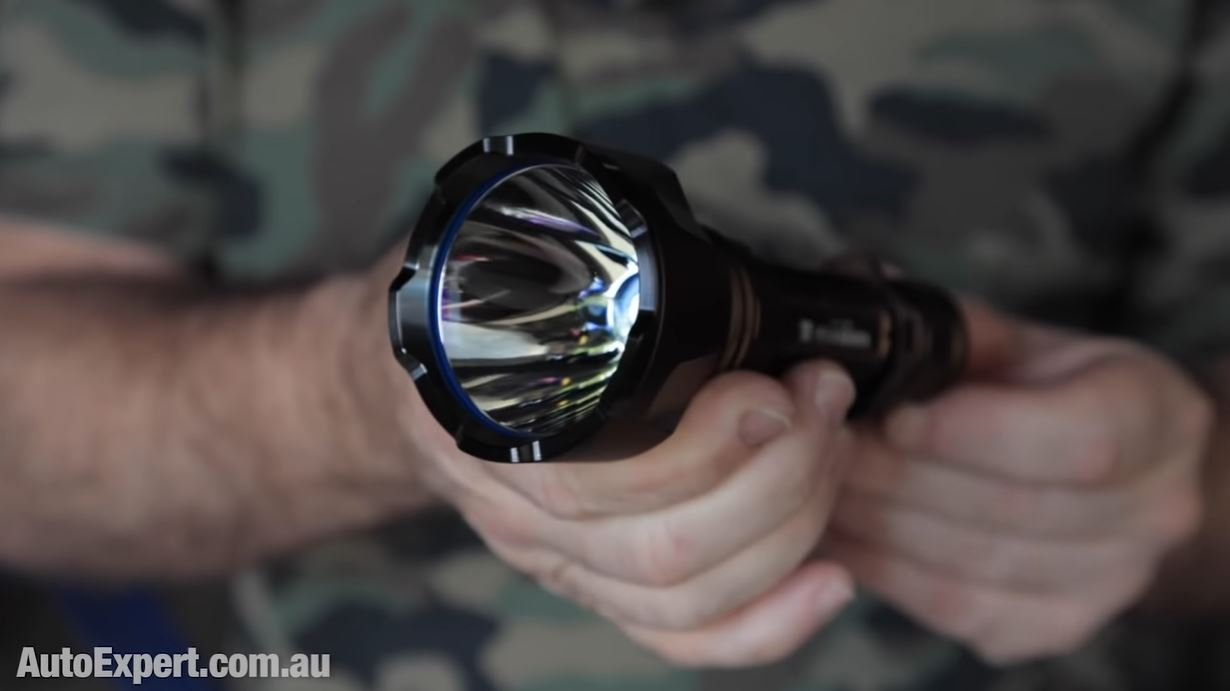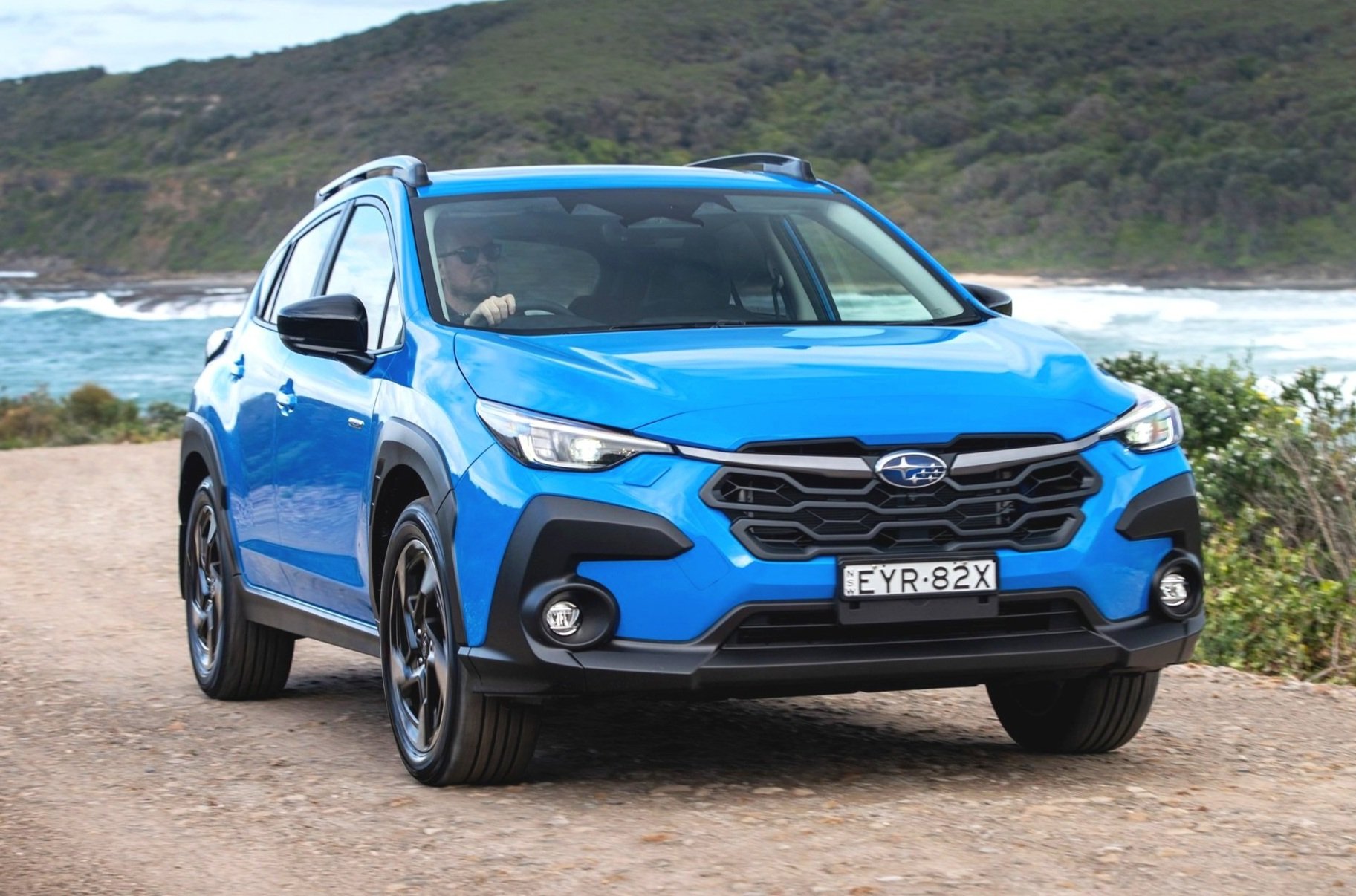Responding to your EV battery thermal runaway comments and criticism
Reacting to your awesome, interesting, misguided and absurd comments about the thermal runaway in EV batteries which probably sunk the Felicity Ace cargo ship...
In this report, I’ll be reacting and responding to the interesting, uplifting and at times stimulating comments and questions posed in my recent report, Felicity Ace and EV Battery Thermal Runaway: Potential disaster hidden in every electric car >>
If you know not what Thermal Runaway is, you should start with Part 1 of this story and return here for a more technical analysis of what happens when electric vehicle batteries go bang.
Our modern world is increasingly battery powered, including the very equipment I used to make my reports every week.
I use nine battery devices, incidentally, which includes the camera used to record this episode, an external monitor so I can see myself, there's a mic on a boom above me, a tablet teleprompter I read from, a wireless keyboard to drive the prompter, plus four supplementary lights (all lithium-ion powered). What could possibly go wrong?
Can you hear that? That's right the unmistakable sound of nuts:
This whole argument is based on an entirely false premise. I do not hate Volkswagen. I love Volkswagen.
Without Volkswagen's fine contribution to automotive events this century, there would have been a whole lot less juicy stuff for someone such as me to report. I would have had to dig a whole lot deeper, as a reporter.
The abject criminality ruining those farmers livelihoods with those inventive cannons in Mexico, gassing those monkeys in the name of marketing (especially newsworthy in the circumstances), and the record fine here in Australia, the outright consumer contempt, basically. These are called facts, they all happened.
They're newsworthy, they're awesome, they all involve the Volkswagen brand, and they're just the tip of my Volkswagen love iceberg.
‘Love’ is probably not even a strong enough word to adequately convey my deep emotional bond to Volkswagen and, of course, its increasingly inhuman stuff-up conduct. But, I guess ‘love’ will have to suffice.
Plus, it's entirely disingenuous to imply batteries made by third party therefore: Volkswagen is not responsible. That paints you as something of a cult member. Same goes for Tesla’s allegedly superior battery tech >>
Also this whole concept of objectivity is completely overblown in the mainstream, let's not forget. There is no other side for balance regarding gassing those monkeys or acting like criminals - there's just not. The biggest and best stories that are ever reported do not have two sides: two planes fly into the World Trade Towers; tsunami strikes Japan; Bali bombings; Dieselgate; Russia invades Ukraine.
Pro Tip: When you drill right down into the logic of so-called ‘objectivity’, the whole concept is susceptible to crashing down in a catastrophic failure of ambiguity. But you'd have to pay actual attention at school/’university if you want to understand why.
Felicity Ace is on the bottom of the Atlantic ocean because the batteries in those electric Porsches, I’m surmising, succumbed to the phenomenon known as catastrophic thermal runaway and they did this in the way that internal combustion cars could not.
Those in glass houses, David, shouldn’t throw stones. Considering you’re the ignorant one here who, seemingly, hasn’t bothered to cap-up his own name, let alone conduct actual peer-reviewed research on this technical issue.
Plenty of people in the comments, like the grammatically incorrectly named David Pearn, were very keen to insinuate the purported invulnerability of lithium-ion phosphate batteries…
My AutoExpert AFFORDABLE ROADSIDE ASSISTANCE PACKAGE
If you’re sick of paying through the neck for roadside assistance I’ve teamed up with 24/7 to offer AutoExpert readers nationwide roadside assistance from just $69 annually, plus there’s NO JOINING FEE
Full details here >>
AutoExpert DISCOUNT OLIGHT TORCHES
These flashlights are awesome. I carry the Olight Warrior Mini 2 every day - it’s tiny, robust, and super useful in the field or in the workshop. Olight is a terrific supporter of AutoExpert.
Use the code AEJC to get a 12% discount >>
THE FEEDBACK CONTINUES…
Here’s one of those lithium-ion nutbags who has tried very hard to hit the nail on the head, scientifically, except it’s his own thumbnail, unfortunately:
Okay, let’s start by defining terms. Let's keep up with the facts by calling them LFPs from here-on, because lithium-ion and lithium-iron phosphate (i-r-o-n) is too confusing in the verbal communication domain. ‘LFP’ means ‘F’ for ‘ferrous’, meaning ‘iron’, with an ‘R’. It's ‘lithium-iron phosphate’, like ‘Iron Man’.
All lithium battery chemistries are susceptible to thermal runaway events, including LFPs. These runaways can occur as a result of overcharging, such as in a failure of a charging control system or by external heating, such as in a fire.
In the above 2021 paper, for the third International Conference on Air Pollution and Environmental Engineering, researchers intentionally overcharged three different kinds of commercially available LFP batteries under controlled conditions. They found:
That's interesting and it makes sense, even though it might seem at first to be counter-intuitive. The researchers attributed that difference to the case that the cell was in; more surface area equals a lower temperature, obviously, because of convective cooling in respective LFP batteries.
These researchers concluded:
Yeah, obviously we need a temperature monitoring scheme because thermal runaway is a thing, even for LFP chemistry batteries. And, as if that's not enough on its own, eight proper brainiacs published that paper after sticking a variety of batteries in an oven beneath the letterhead of the Royal Society of Chemistry. For Queen and Country.
I’ll be you could hear the cackling from down the hall. No doubt the lab was a mess.
All three lithium-ion chemistries in that study, to which they gave the full KFC treatment, went into thermal runaway and here's what they said about LFP:
Let's just put that in perspective. Roughly 4 per cent carbon monoxide doesn't sound like much, does it? Well, lethal concentration is 0.1 per cent and at 1.3 percent you’re unconscious in two or three breaths. Imagine that.
Now, three propellerheads in 2018, including two full-blown doctor PhD-types and one non-doctorial but still qualified-brainy from the University of Sheffield delivered that paper for the third annual conference in energy storage and its applications; bit of an insomnia cure.
These scientists also stuck even more LFP batteries in an oven in the name of even more prolific battery destruction. With the oven at 220 degrees Celcius they managed to spark up a severe thermal runaway in the LFP cells.
The temperature of the case of the cells exceeded the oven temperature which indicates that the electrolyte was decomposing exothermically and the runaway was getting serious. That's how you tell.
They describe the LFP runaway as less severe and a safer alternative to lithium cobalt oxide chemistry.
The inevitable conclusion that flows from this is all lithium-ion batteries will go into a thermal runaway if they heat up in a fire.
LFP is the safest alternative of all the lithium chemistries, commercially available to car makers. And I know that Greenwashing is the new black for the car industry, but all batteries have inherent safety issues.
Now I'm not anti-EV but facts are facts. LFP batteries go into a severe thermal runaway condition at a temperature below that of the autoignition of paper which is roughly 230 degrees Celcius - and also substantially lower than the autoignition temperature of gasoline at roughly 260 degrees C.
While LFP is the best performing of the lithium-ion chemistries in this unfortunate thermal runaway situation, making it “safest”. If you want the safest battery, you need more cells to get the desired voltage and the battery is going to be the heaviest for any given capacity, which will diminish the vehicle's range.
Gasoline vehicles do not go into thermal runaway, they just burn. Nor do they generate their own oxygen as they burn.
The batteries in EVs do those things, hence entirely different fire fighting and safe transport systems and procedures are required for EVs.
Plus, you can transport internal combustion vehicles nearly empty of fuel, but all of the reactive mass is in the batteries all the time, irrespective of the state of charge.
No. Foam is designed to deprive a flammable liquid of atmospheric oxygen. A battery, in a severe thermal runaway, makes its own oxygen, because there's a lot of elemental oxygen in the electrolyte. That's what the ‘O4’ is in phosphate (PO4) - the ‘O4’ is all oxygen. Therefore, foam won't work because a burning battery, dumbing this right down, generates its own oxygen.
I actually see this as something of a net positive for society fewer caravans means better highways for the rest of us as long as nobody gets hurt of course.
But seriously, yeah, it could be a problem. People buy batteries and, like everything else, some people at least solely on price. I'd suggest that the cheapest batteries are unlikely to be the safest ones.
Just like buying solar panels and home batteries, it probably also matters how they're installed and the calibre of the charging and control components. If you want to know more about batteries in-depth: Understanding Batteries: Watt-hours Vs Amp-hours, power, energy and more
That crash was caused by dangerous driving, insofar as I can tell, having watched it from the captured dashcam footage reported on the commercial news.
Everything with lots of stored energy can catch fire, potentially. Everything.
This is just the dodgiest of arguments, however. I want better safety procedures for EVs because of the specific risks posed by the batteries, which are significant and different. They're not better or worse, they're just different.
I actually think they catch fire less, but they're harder to deal with when they do.
Now, only an idiot could interpret all of that as anti-EV sentiment. Pro-safety is not anti-EV.
There's no metallic lithium in batteries. The lithium is present as a compound; they're different things. Lithium-cobalt oxide is a compound, lithium-ion phosphate or whatever, these are completely different things to lithium the metal.
Now, lithium the metal, it does burn enthusiastically in water. So does sodium, and sodium's just another metal. There's only between half a gram and one gram of elemental lithium in an average 18650 commercial battery. None of it is in the metallic state.
Lithium is not the problem here. The overall reactivity, leading to exothermic decomposition and release of oxygen gas during a thermal runaway - that's the problem.
It's like steel and rust. They're kind of related because they're both full of iron, but they're completely different things. Nobody's going to attempt to make a bridge out of rust. I hope.
Sodium burns in water, but sodium chloride, like table salt, it just dissolves in the water in your food and it's the most common flavour enhancer known. They're both full of sodium, the element.
Yeah, you don't extinguish a thermal runaway on a commercial scale, you just don't.
You wait for the fire to consume the reactive materials you keep everyone away and you clean up the mess once it all calms down.
They didn't bring this fire under control incidentally that's just fire department PR spin they let it burn and they probably had each of the 13 tonne modules separated from one another by a significant concrete enclosure so that the runaway had no place to go.
How do they get an EV in there? A crane or a tow truck, they would be the two known ways of getting your burning EV into your improvised bathtub.
Yeah, those crazy Dutch in particular have these new fire fighting bathtubs into which you put a burning EV using said crane or tow truck and, presumably it goes in there for a few days until the humongous specific heat capacity of the water wreaks its energy absorbing voodoo to stop the conflagration from spreading.
The big danger with these things is that they can seem to calm down, and, once they’ve been taken to some holding yard before it gets written off by the insurance company, they often just burst into flames again, bringing buildings down, causing chaos, generally.
And alternative approach to the bathtub method, the Germans have a fairly neat, enthusiastic irrigation system for dealing with the same kind of problem. Crazy times ahead for crash rescuers and fire fighters, I'd suggest.
You can't put a thermal runaway out. Can't.
All you can do is use water to absorb the energy, it’s a shock absorber for heat.
There's no metallic lithium in batteries, we covered that too, just like there's no metallic iron in rust.
I'm not saying that you should store your batteries in water, that's quite a poor idea. I'm saying if a battery has a severe thermal runaway event you need to suck out the heat and keep things as under control as you can.
Water seems so mundane, but it has this frankly miraculous heat absorbing property: 4.18 kilojoules of heat absorption capacity per kilo of water, for just one degree Celcius of rise in temperature. This is, of course, why we use it in radiators and things of that nature, where a lot of heat has to be rejected quickly using a fairly small amount of operating fluid.
It's just awesome how some people's minds work isn't it?
Trust the fake-named commenters to so confidently criticise inadequate safety procedures for the maritime transport of those shitbox electric Porsches and misconstrue it as advocating in favour of oil spills.
Well done, thinking I’m diminishing the importance of preventing oil spills. I'm not advocating for either of those things. Oil spills: bad, definitely bad. Let's all do our best to avoid oil spills.
However, in relation to this particular thermal runaway event which caused sinking of said Felicity Ace and oil spills generally, I'd suggest that we probably don't need new procedures to prevent oil spills. We probably need bigger fines for mistakes like these and better compliance by the companies doing those jobs.
Better safety procedures for shipping EVs would mean that dozens of people would not have had to risk their lives saving the crew of the Felicity Ace on the open ocean in the middle of in winter or conduct failed attempts to fight the fire and save the ship and 500 million dollars in vehicles and a ship worth however-many-millions.
With 4000 tons of fuel and oil soon to be released into the Atlantic Ocean, which bit of that exactly is the bit that sells the message, ‘but oil spills they're quite okay’?
This is the worst thing about online comments by fake named idiots. The default presumption is always to make the worst possible interpretation of anything which a creator like me says.
Yet nutbags like you still wonder why advanced extra-terrestrials continue not to make formal contact.







































The soft-roading Subaru Forester packs a punch, and is one of the safest, most practical and capable SUVs on sale today. It’s also a great value, nicely driving and popular five-seater - with an all-new version coming soon…